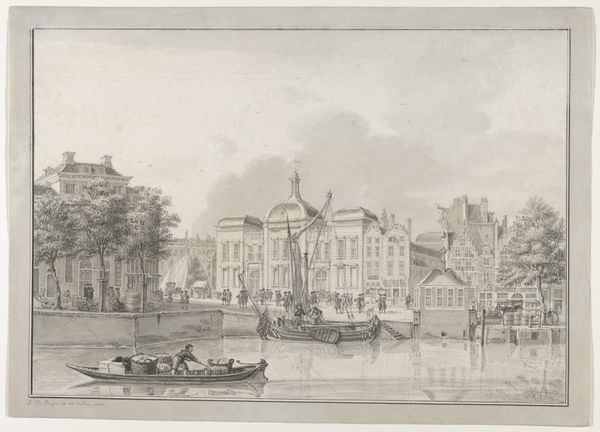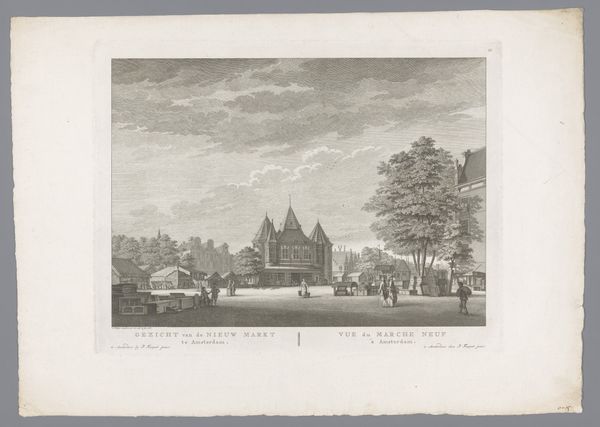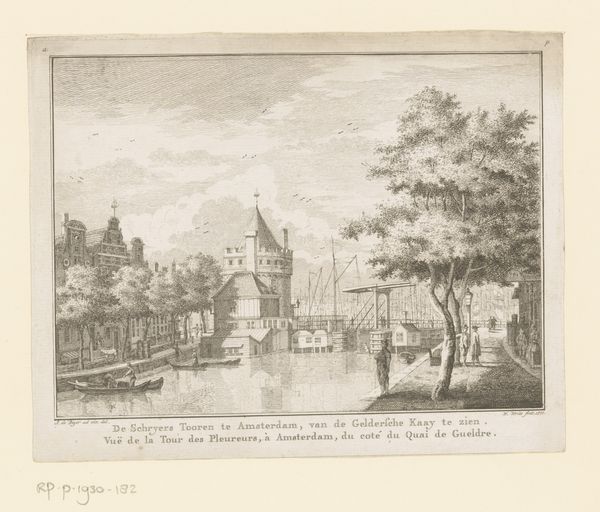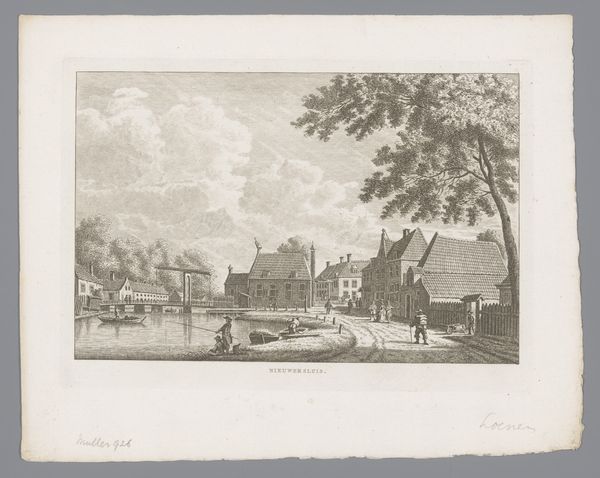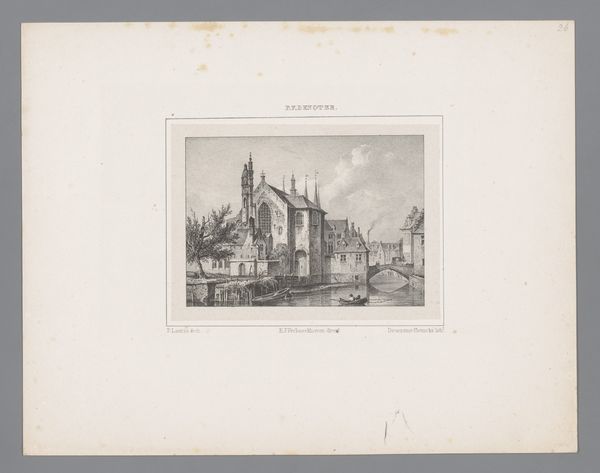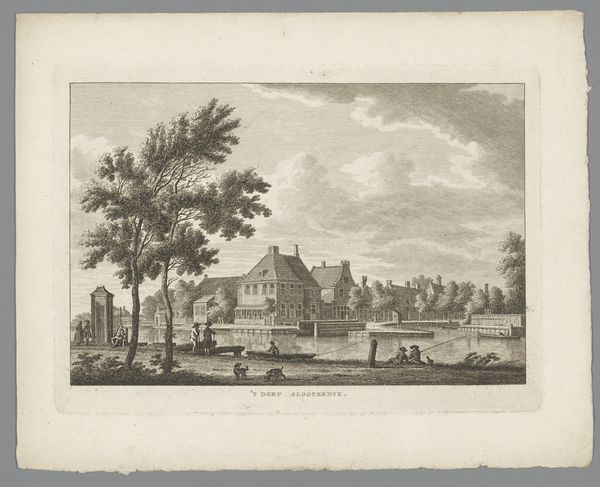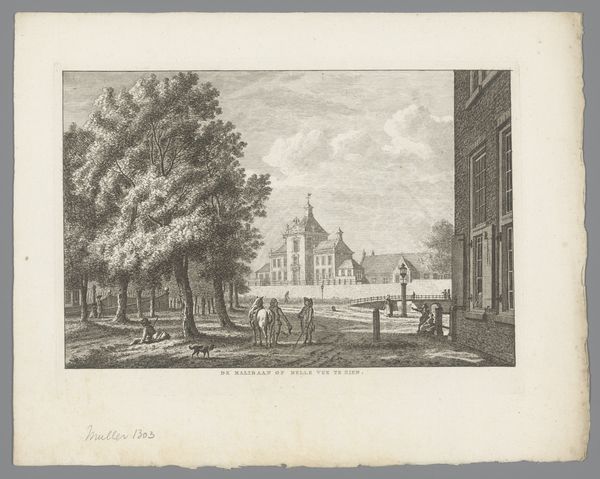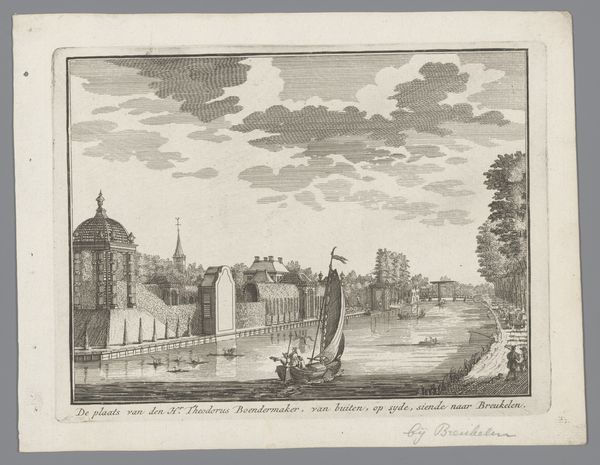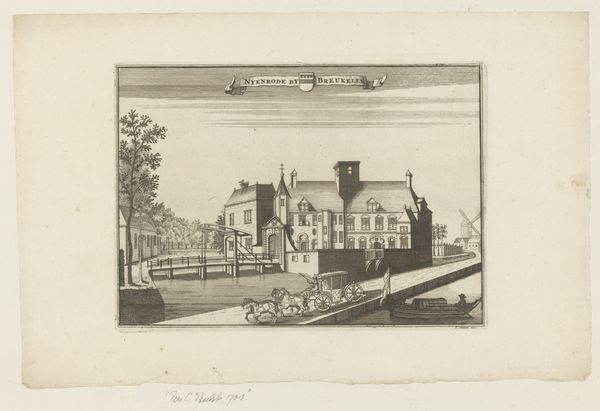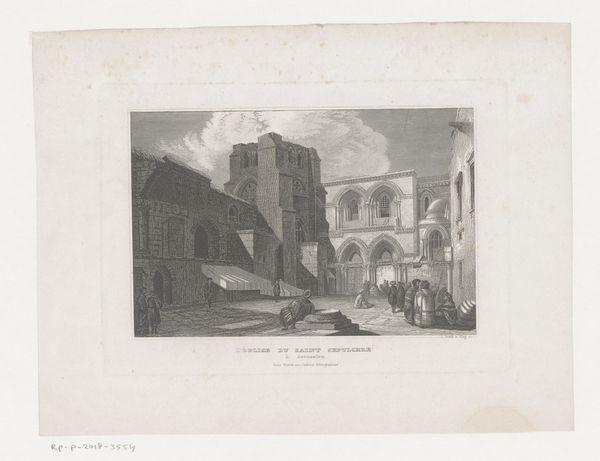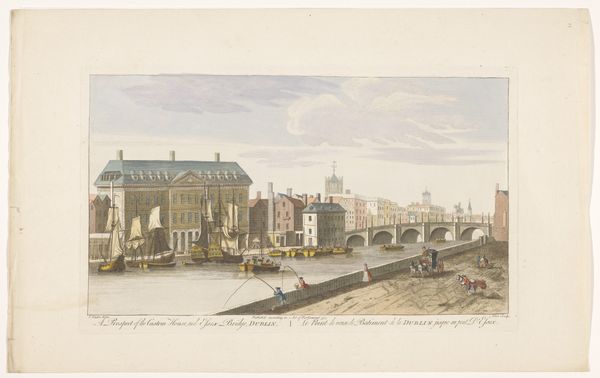
# print
#
landscape
#
cityscape
#
realism
Dimensions: height 180 mm, width 230 mm
Copyright: Rijks Museum: Open Domain
Editor: So, here we have an 1863 print titled "Gezicht op Leidschendam," located at the Rijksmuseum. The artwork shows a very traditional Dutch town view, with a waterway, buildings, and a bridge. It has this tranquil feeling. How do you interpret this work from a more formal point of view? Curator: The piece distinguishes itself through a careful orchestration of lines and forms. Notice how the composition relies heavily on the contrast between the verticality of the buildings and the horizontality of the water. This opposition gives the image a structured feeling. The subtle gradation of light and shadow is also relevant, wouldn't you agree? It brings a certain depth and reality to the scene, without overindulgence. How does this visual arrangement strike you? Editor: I see that. It creates depth, a sense of realism, and the controlled gradations don’t evoke much emotion or narrative. Curator: Precisely. The focus appears to be more on the architectural structures and their placement within the pictorial space rather than an emotional response. Consider how the geometry and the deliberate placement of each element contribute to the image’s sense of balance and order. The way the artist chose to show this scene. Editor: Now that you mention the order, I can definitely see it. And while it doesn't reach out and grab me, the print is more concerned with lines and the relationships between elements. It seems like this piece offers much to see beyond a first look. Thanks! Curator: Absolutely, thinking about an image in terms of its formal arrangement really makes you see the decisions that constitute what can be an overlooked piece.
Comments
No comments
Be the first to comment and join the conversation on the ultimate creative platform.


